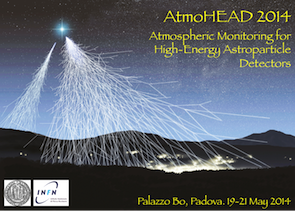Speaker
Martin Will
(IFAE)
Description
Astroparticle experiments depend on a good knowledge of scattering and absorption of photons in the atmosphere. Typically two kinds of scattering can be distinguished, Mie scattering on large scale dust particles and Rayleigh scattering due to the molecular atmosphere. Both can be characterized quite well by measurements, but through advances in the modeling of the atmosphere in recent years, a very powerful alternative is provided. GDAS is a 3-hourly global model of the atmospheric state parameters on a 1 degree grid, based on real-time measurements and numeric weather prediction. HYSPLIT is a powerful tool to track the movement of air masses at various heights, and with it the aerosols. Typically the GDAS model is used in HYSPLIT to model the molecular atmosphere, and while the aerosol scattering itself can not be estimated using this tool, it is possible to track the path of air masses and make estimations of the clarity or the atmosphere depending on the origin of the aerosols (sea, desert, vegetation). Both GDAS and HYSPLIT were developed by the US weather department NOAA and the data are available through the internet without cost. In this talk we will present shortly the two models and some case studies for several astroparticle experiments.
Author
Martin Will
(IFAE)
Co-author
Dr
Karim Louedec
(LPSC, CNRS/IN2P3, UJF-INPG, Grenoble)

